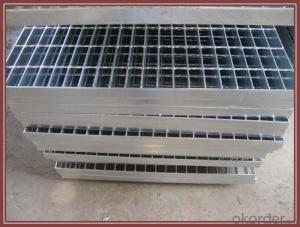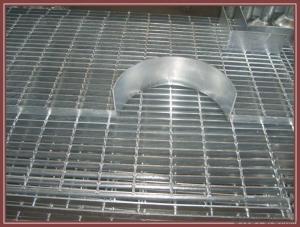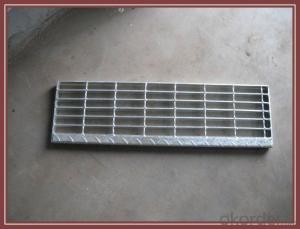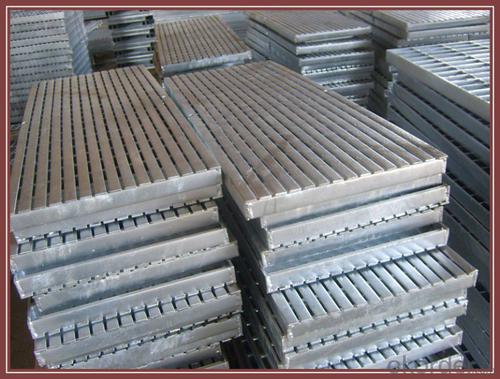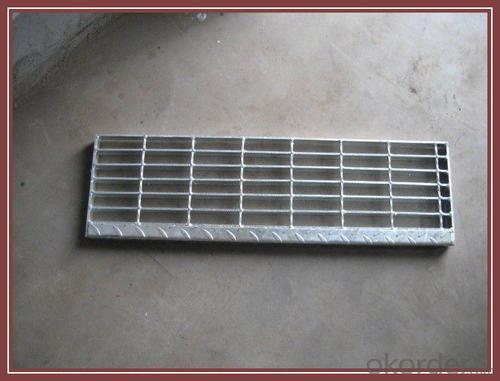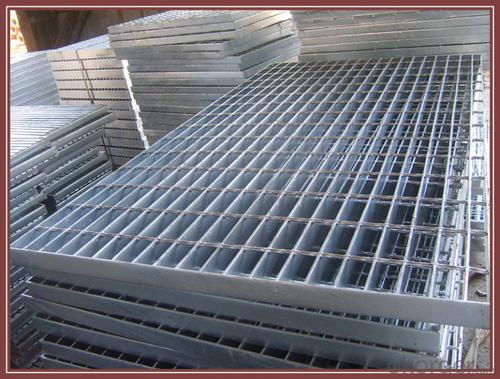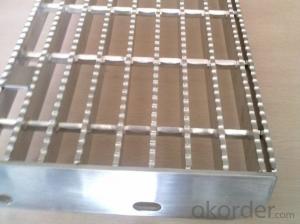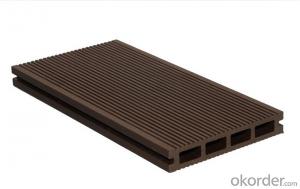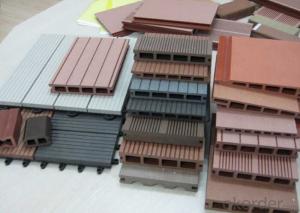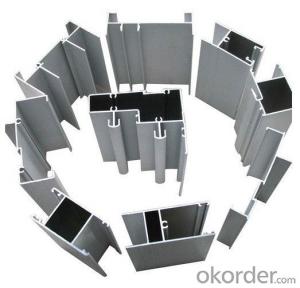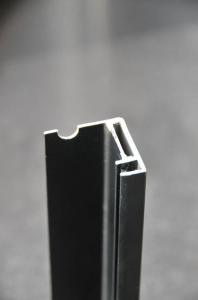Pressed And Forged Aluminum Flooring Grating/Grate/Grates
- Loading Port:
- Qingdao
- Payment Terms:
- TT OR LC
- Min Order Qty:
- 5000 pc
- Supply Capability:
- 6000000 pc/month
OKorder Service Pledge
OKorder Financial Service
You Might Also Like
1.Description of Drainage trench cover:
Drainage trench cover is widely used in the urban road, the square, the botanical garden, the wharf, the airport, the parking lot, the road, each kind of industry, the civil project, etc.
2.Main features of Drainage trench cover:
I--Carrying 20 tons of weight
II—Carrying 14 tons of weight
III---carrying 6 tons of weight
IV---carrying 2 tons of weight
V---Carrying pedestrian weight
3.Glass Wool Blanket Images:

4. Drainage Trench Cover Technical Parameters:
These drain cover plate applies to the road cross-sectional and longitudinal drain. The drains width ranging from 200mm to 550mm.
A means the steel grating length
H means the steel grating height
A means the frame length
H means the frame height
5.FAQ
We have organized several common questions for our clients,may help you sincerely:
①How about your company?
A world class manufacturer & supplier of Drainage trench cover is
one of the large scale professional investment casting production bases in China,consisting of both casting foundry forging and machining factory. Annually more than 8000 tons Precision casting and forging parts are exported to markets in Europe,America and Japan. OEM casting and forging service available according to customer’s requirement.
②How to guarantee the quality of the products?
We have established the international advanced quality management system every link from raw material to final product we have strict quality test; We resolutely put an end to unqualified products flowing into the market. At the same time, we will provide necessary follow-up service assurance.
- Q: 6063 aluminum manufacturers fail to notice how to write a written report
- Hello!You can search the Internet for unqualified written reports, and see if there are similar onesYou see, you sign the contract, which has not marked this point, say how to deal with substandard, you just need to copy the above, make a little change on the lineAsk if your manufacturer has a template. How do you write it?In fact, this is not what the provisions of how to write, as long as the two agreed to make things clear, double admit something on the line, cover double seal, all right, hope to be able to help you, thank you for the adoption.
- Q: Fenglv aluminum material how ah? What aluminum materials do you use for windows and doors?
- Economic point of view, choose plastic film packaging materials. Yes, the price of the material must be more expensive, at one price per share.
- Q: What specific coatings or finishes are necessary for aluminum profiles to withstand cold weather conditions?
- <p>In cold climates, aluminum profiles may require special coatings or finishes to enhance durability and resistance to corrosion. These can include anodizing, which forms a protective oxide layer on the aluminum surface, or powder coating, which provides a hard, durable finish. Additionally, thermal breaks may be incorporated into the design to reduce heat transfer and prevent condensation. It's crucial to select the right finish based on the specific environmental conditions and the intended use of the aluminum profile.</p>
- Q: 3030 aluminum profiles, can be used in outdoor snow exposure environment?
- This refers to the 3030 heavy aluminum profiles. General aluminum profile manufacturers will make a number of their own products,
- Q: How do you calculate the weight-bearing capacity of aluminum profiles?
- When determining the weight-bearing capacity of aluminum profiles, several factors must be taken into account. These include the profile dimensions, the grade of aluminum used, and the specific requirements of the application. To start, it is necessary to ascertain the dimensions of the aluminum profile, including its length, width, and thickness. These measurements are crucial for calculating the cross-sectional area, a key parameter in determining the profile's load-bearing capacity. Next, the material grade of the aluminum used must be considered. Different aluminum alloys possess varying strength properties, so it is essential to know the specific alloy and temper designation. This information can be obtained from the manufacturer or supplier. Once the cross-sectional area and material grade are known, engineering standards or handbooks can be consulted. These resources provide load tables or formulas for calculating the safe load capacity of aluminum profiles. They offer a range of load ratings based on different loading conditions, such as static or dynamic loads, as well as factors like span length, support conditions, and safety factors. It is also crucial to take into account any additional factors that might affect the load-bearing capacity. These could include temperature, vibration, or potential impact forces. Adjustments to the calculated load capacity might be necessary to accommodate these factors. Furthermore, seeking advice from a structural engineer or an aluminum profile manufacturer can be highly beneficial. They can provide valuable insights and recommendations for more accurate calculations. They may possess specialized knowledge or testing data specific to the aluminum profile being considered, ensuring a more reliable assessment. In conclusion, calculating the weight-bearing capacity of aluminum profiles involves considering the dimensions, material grade, and specific application requirements. Consulting relevant resources or experts in the field is necessary to ensure accurate and safe load calculations.
- Q: How do aluminum profiles contribute to sustainable building practices?
- Aluminum profiles play a crucial role in promoting sustainable building practices for several reasons. Firstly, aluminum is a highly recyclable material, meaning that it can be melted down and reused multiple times without any loss in quality. This recyclability greatly reduces the need for extracting and processing virgin aluminum, which is an energy-intensive and environmentally damaging process. By using aluminum profiles in construction, we can significantly minimize the demand for new aluminum production, thus conserving natural resources and reducing carbon emissions. Moreover, aluminum profiles are lightweight yet strong, making them ideal for creating energy-efficient structures. The lightweight nature of aluminum reduces the load on the building's foundation and structural elements, resulting in lower material requirements and reduced construction costs. Additionally, a lighter structure requires less energy to heat and cool, leading to decreased energy consumption and reduced greenhouse gas emissions over the building's lifespan. Furthermore, aluminum profiles have excellent thermal and acoustic insulation properties. When properly utilized, they can contribute to the overall energy efficiency of a building by minimizing heat loss or gain through windows and doors. This translates into reduced reliance on artificial heating and cooling systems, leading to decreased energy consumption and lower utility bills. Additionally, aluminum profiles are highly durable and require minimal maintenance. Their resistance to corrosion, weathering, and UV rays ensures a long lifespan, reducing the need for frequent replacements and repairs. This not only saves resources but also reduces waste generation and landfill usage. Lastly, aluminum profiles offer great design flexibility and can be easily integrated into various architectural styles and designs. This versatility enables architects and builders to create aesthetically pleasing and functional structures that meet the needs of occupants while still adhering to sustainable building practices. In conclusion, aluminum profiles contribute to sustainable building practices by being recyclable, lightweight, energy-efficient, thermally insulating, durable, low maintenance, and versatile. By incorporating aluminum profiles into construction projects, we can reduce our environmental footprint, conserve natural resources, and promote a more sustainable future.
- Q: What are the different types of brackets used with aluminum profiles?
- There are several types of brackets commonly used with aluminum profiles, including corner brackets, T-slot nuts, angle brackets, and joiner brackets. These brackets are designed to provide stability, connection, and support when assembling aluminum profiles in various configurations and applications.
- Q: Are aluminum profiles resistant to chemicals and acids?
- Generally, aluminum profiles exhibit resistance to chemicals and acids due to their natural oxide layer, making them appropriate for diverse industrial uses. Nevertheless, the level of resistance may differ depending on the exact type of chemical or acid employed, as certain aggressive substances can still corrode aluminum. In these instances, one can enhance the resistance by applying supplementary protective coatings or surface treatments. To guarantee the utmost performance and durability, it is recommended to consult experts or manufacturers to ascertain the compatibility of aluminum profiles with specific chemicals or acids.
- Q: Can aluminum profiles be custom-designed or customized?
- Yes, aluminum profiles can be custom-designed or customized according to specific requirements and specifications. This flexibility allows them to be tailored to various applications and industries, providing a wide range of options for individual needs.
- Q: Can aluminum profiles be used for electrical bus ducts?
- Indeed, electrical bus ducts can be constructed using aluminum profiles. Within the electrical industry, aluminum is widely employed as it possesses exceptional conductivity and lightweight characteristics. Its remarkable electrical conductivity plays a vital role in efficiently transmitting electrical power. Furthermore, aluminum profiles exhibit durability, resistance to corrosion, and the ability to endure high temperatures, rendering them suitable for diverse industrial applications. Nonetheless, it is crucial to carefully assess the project's unique requirements and regulations in order to ascertain that the aluminum profiles conform to the essential electrical and safety standards.
Send your message to us
Pressed And Forged Aluminum Flooring Grating/Grate/Grates
- Loading Port:
- Qingdao
- Payment Terms:
- TT OR LC
- Min Order Qty:
- 5000 pc
- Supply Capability:
- 6000000 pc/month
OKorder Service Pledge
OKorder Financial Service
Similar products
Hot products
Hot Searches
Related keywords

